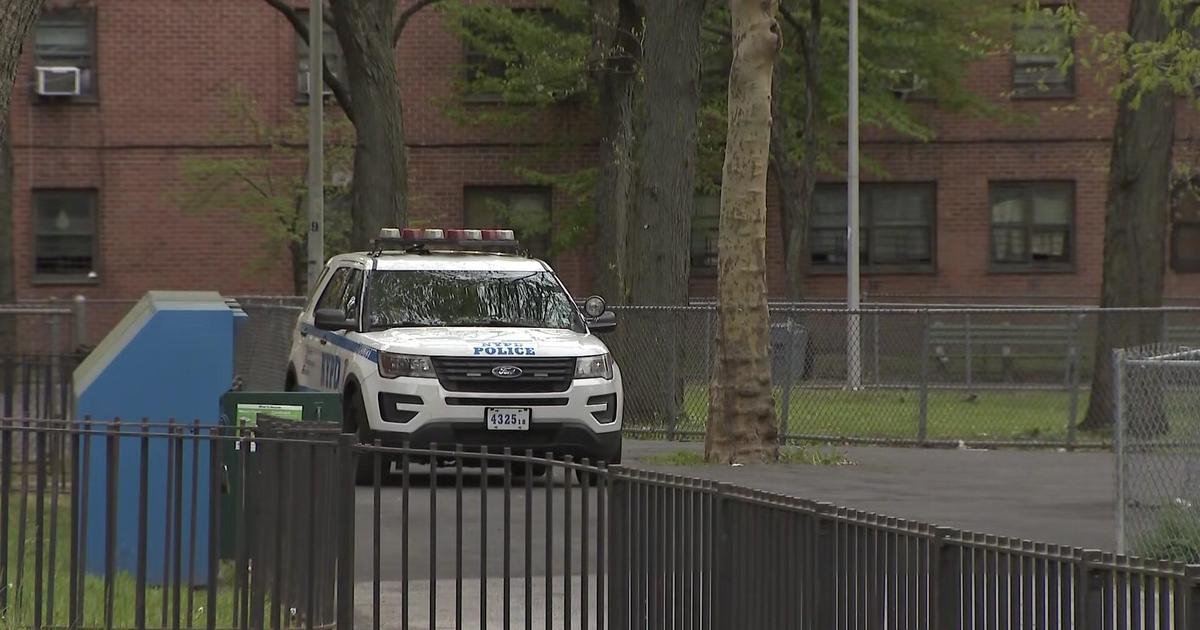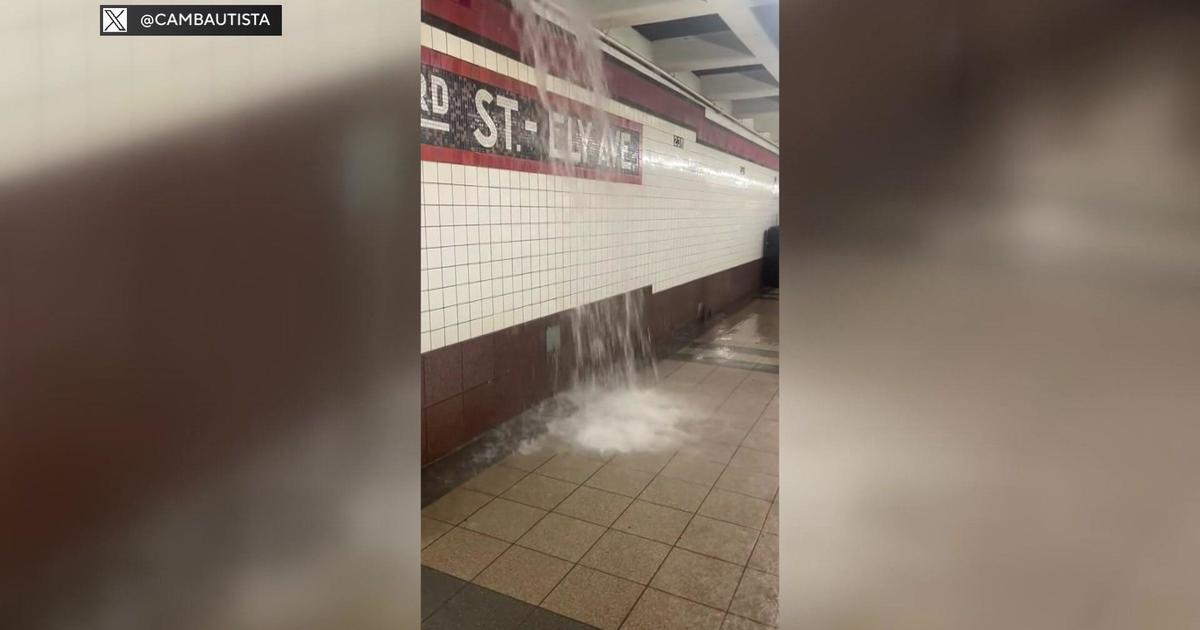Limits On Deliveries, Crackdown On Blocking Intersections Among Highlights Of De Blasio Traffic Congestion Plan
NEW YORK (CBSNewYork/AP) -- Beginning next year, New York City will test a pilot program limiting curbside delivery in certain high-traffic commercial zones during peak hours – and will also crack down on drivers who block intersections.
Mayor de Blasio announced a five-point plan Sunday with goals all starting with the word clear – clear lanes, clear curbs, clear intersections, clear zones, and clear highways. The plan calls for the addition of 160 police officers to enforce the new traffic rules.
As 1010 WINS' Roger Stern reported, the goal is to ease congestion and keep traffic moving.
Currently, the average speed in the city is a mere 5 mph, 23 percent lower than in 2010.
"When you want to get to the place and time is of the essence, then it's awful," one woman said. "You're cursing."
"I wouldn't live here for free," added Stan Pasterczyk of Middletown, New Jersey. "The parking, the congestion -- everything. It's beautiful but it's not for me."
De Blasio said something has to be done.
"I love this city. We all love this city. We know it's not the easiest place to live. It's the best place to live. It's the most wonderful city in the world," de Blasio said. "But we've got to make it easier. We've got to make it more livable. We've got to make it easier to get around."
For clear lanes, weekday parking and standing on busy crosstown streets will be limited to only one side from 6 a.m. to 7 p.m., and 110 new police officers will be brought on to enforce the rule.
For clear curbs, during a six-month test beginning in January, there will be a total ban on rush-hour deliveries on certain streets in Manhattan, Queens, and Brooklyn. The deliveries will not be allowed during morning and evening rush hours, from 7 a.m. to 10 a.m. and 4 p.m. to 7 p.m.
"We will ban all deliveries and standing on both sides of the street," de Blasio said.
De Blasio specified the streets that will be affected by the clear curbs program. They include a rectangular zone from 45th Street north to 50th Street and from Madison Avenue west to Sixth Avenue in Midtown, as well as Flatbush Avenue between Tillary Street and Grand Army Plaza in Brooklyn, and Roosevelt Avenue between Broadway and 108th Street in Queens.
For clear intersections, the program will eventually include 50 new police officers ticketing anyone who blocks an intersection.
"When one car blocks the box, it affects everyone else's life," the mayor said.
De Blasio noted that New Yorkers often attempt to enforce the law against blocking the box themselves, "using certain obscene gestures and off-color comments," but what is really needed is aggressive enforcement.
Drivers blocking the box will be ticketed by an NYPD officer and given a fine and two points on their driver's licenses.
For clear zones, de Blasio notes there are numerous hot spots for congestion old and new. In particular, he called for new truck routes in Hunts Point, the Bronx, and noted a need for new rules for increased traffic coming to the North Shore of Staten Island where the Empire Outlets retail complex will open.
For clear highways, de Blasio called for a partnership with the State of New York to create a task force focused on some of the worst highway problems in the city. De Blasio in particular noted his "personal, all-time most hated highway," the Cross Bronx Expressway, as having an "unacceptable" situation when it comes to traffic problems.
He also said the Staten Island Expressway and the Gowanus Expressway need special attention.
De Blasio said the task force will look at managing the flow of traffic onto the highways, noting that some parts of the country have traffic signals at entry ramps. He also suggested pre-positioning of emergency vehicles to deal with crashes.
He also noted that while some expressways have high-occupancy vehicle lanes, others – including the Cross Bronx – do not, and a plan to add HOV lanes where they do not now exist may be discussed.
The mayor said by the end of next year, the average speed for drivers in Midtown Manhattan will increase by 10 percent.
"No one of these items is a magic bullet, but taken together, they're going to make a big difference in the lives of everyday New Yorkers," de Blasio said.
Cabbie Pierre Dorismond said he supports anything that can help him do his job efficiently. He was particularly pleased with the idea of restrictions on deliveries.
"That would be beautiful if they can do something like that," he said, "even the night delivery too."
De Blasio said he anticipated some pushback.
"I know there'll be some criticism. I have no doubt," he said. "But if the status quo is this broken. We have to do something different, and this is one of the biggest changes we can make."
And the mayor indeed did get pushback from state Assemblywoman Nicole Malliotakis (R-Staten Island), who is running for mayor him. Malliotakis complained that the mayor's plan focuses on "taking more money from his citizens with fines."
Malliotakis also told CBS2's Sanchez that she does not believe de Blasio is even solving congestion.
"If you're adding traffic agents to generate traffic flow, that's one thing," she said. "But he's not doing that. He's adding traffic agent to actually fine motorists more. So this is about revenue generating once again."
She also said de Blasio failed at all to mention the fact that like the subway system, New York City roadways suffer from antiquated signal systems.
"Bill de Blasio just doesn't get it," she said in the statement.
Malliotakis continued, "(W)e need to bring New York City into the 21st century by upgrading our subway signals to increase capacity and swapping out old traffic signals for Smart Light technology in all five boroughs," Malliotakis said in a statement.
The technology "speeds traffic, cuts congestion, decreases accidents and lowers fuel consumption with an array of sensors that capture data on traffic flow and then makes real time adjustment s to traffic signals along the route," she said in the statement.
Malliotakis also called for keeping HOV lanes open 24 hours a day, offering more ferry options so people can use the city's waterways, and reevaluate the hours that bus lanes are in effect. She also accused de Blasio's Vision Zero program to prevent traffic deaths of "crippling" traffic in the outer boroughs.
"Let's stop penalizing motorists and start investing in infrastructure, providing transportation alternatives and using common sense to keep up with economic and population growth," she said in a statement.
The transportation advocacy group Move New York said the mayor should include congestion pricing in his plan to decrease the number of cars that enter the city. The group said it is the heart of the problem.
But the mayor said he does not believe in congestion pricing.
(© Copyright 2017 CBS Broadcasting Inc. All Rights Reserved. The Associated Press contributed to this report.)



